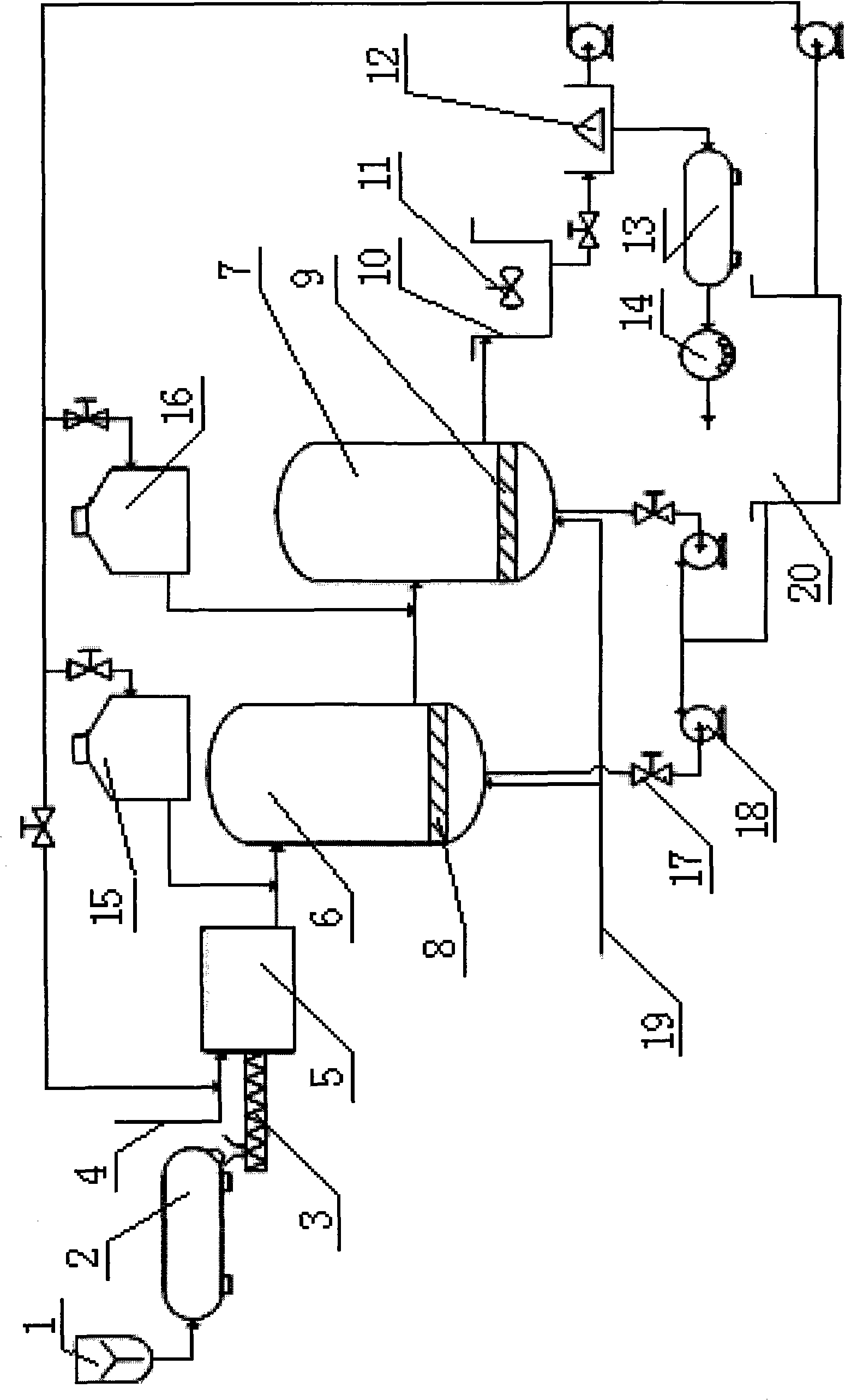Method for separating and recovering carbon from pyrolysis residue of sludge containing oil
A carbon separation and residue technology, applied in sustainable manufacturing/processing, climate sustainability, chemical industry, etc., can solve problems such as unreported oily sludge pyrolysis residue process methods, and achieve low operating costs and applicability Strong, easy to process and install
- Summary
- Abstract
- Description
- Claims
- Application Information
AI Technical Summary
Problems solved by technology
Method used
Image
Examples
Embodiment 1
[0044] A. Take 60kg of pyrolysis residue and 180kg of activator and add it into mixer 1 to stir evenly. The mass ratio of pyrolysis residue and activator is 1:3; the activator is a mixed solution of zinc chloride solution and potassium sulfide solution, zinc chloride The compounding volume ratio of the solution and the potassium sulfide solution is 1:0.35, and the concentrations of the zinc chloride solution and the potassium sulfide solution are both 3mol / L.
[0045] B. Then send the pyrolysis residue and activator into the activation reaction furnace 2 for activation treatment, the heating rate is 10° C. / min; the temperature of the activation treatment is 800° C.; the time of the activation treatment is 2 hours. A post-activation pyrolysis residue is formed in the activation reaction furnace 2 .
[0046] C. Transport the pyrolysis residue after activation into the recovery barrel 5 through the screw conveyor 3, use the height difference between the recovery barrel 5 and the ...
Embodiment 2
[0053] A. Take 30kg of pyrolysis residue and 60kg of activator and add them into mixer 1 to stir evenly. The mass ratio of pyrolysis residue and activator is 1:2; the activator is a mixed solution of zinc chloride solution and sodium sulfide solution, zinc chloride The compounding volume ratio of the solution and the sodium sulfide solution is 1:0.3, and the concentrations of the zinc chloride solution and the sodium sulfide solution are both 3mol / L.
[0054] B. Then send the pyrolysis residue and activator into the activation reaction furnace 2 for activation treatment, the heating rate is 10° C. / min; the activation treatment temperature is 400° C.; the activation treatment time is 3 hours. A post-activation pyrolysis residue is formed in the activation reaction furnace 2 .
[0055] C. Transport the pyrolysis residue after activation into the recovery barrel 5 through the screw conveyor 3, use the height difference between the recovery barrel 5 and the first reaction tank 6, ...
Embodiment 3
[0062] A. Take 90kg of pyrolysis residue and 360kg of activator and add them into mixer 1 to stir evenly. The mass ratio of pyrolysis residue and activator is 1:4; the activator is a mixed solution of zinc chloride solution and potassium sulfide solution, zinc chloride The composite volume ratio of the solution and the potassium sulfide solution is 1:0.4, and the concentrations of the zinc chloride solution and the potassium sulfide solution are both 3mol / L.
[0063] B. Then send the pyrolysis residue and activator into the activation reaction furnace 2 for activation treatment, the heating rate is 7° C. / min; the temperature of the activation treatment is 900° C.; the time of the activation treatment is 4 hours. A post-activation pyrolysis residue is formed in the activation reaction furnace 2 .
[0064] C. Transport the pyrolysis residue after activation into the recovery barrel 5 through the screw conveyor 3, use the height difference between the recovery barrel 5 and the fi...
PUM
 Login to View More
Login to View More Abstract
Description
Claims
Application Information
 Login to View More
Login to View More - R&D
- Intellectual Property
- Life Sciences
- Materials
- Tech Scout
- Unparalleled Data Quality
- Higher Quality Content
- 60% Fewer Hallucinations
Browse by: Latest US Patents, China's latest patents, Technical Efficacy Thesaurus, Application Domain, Technology Topic, Popular Technical Reports.
© 2025 PatSnap. All rights reserved.Legal|Privacy policy|Modern Slavery Act Transparency Statement|Sitemap|About US| Contact US: help@patsnap.com


